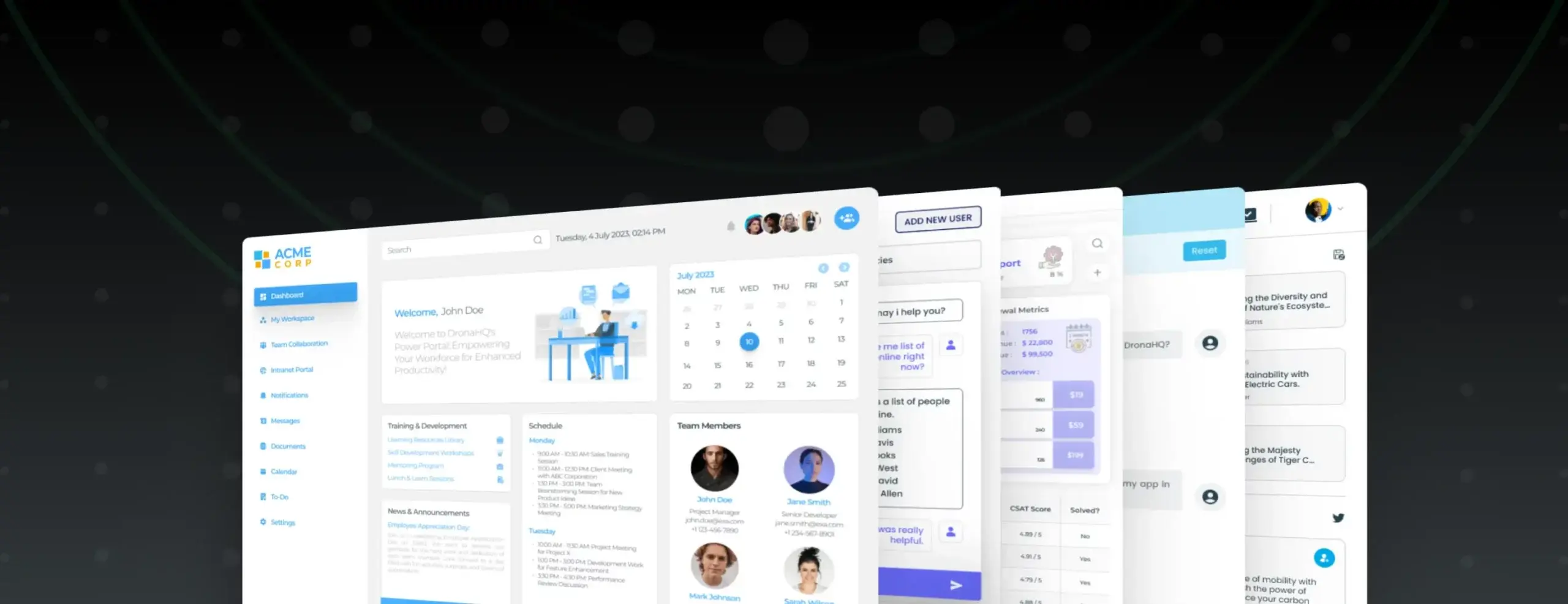

Custom Refund Tool for Customer Support Teams
This article talks about the gaps in most refund management processes and how a custom refund tool is helping support teams with a single interface that gives a complete view of customer details, live tickets, and due refunds. Without having to look up across multiple systems and then logging in to Stripe, the CS teams can issue full or partial refunds to customers, cancel payments, and automatically send notifying emails via SendGrid.
Most return management operations run on broken or disconnected tools that lead to a broken process that is cumbersome, and prone to error. While product returns and exchanges may seem like an uncontrollable phenomenon that take up the productive time of your team, the truth of the matter is, product managers have the power to shape the process in a way that reduces the number of steps involved to a minimum to carve out the time for more fruitful tasks.
What critical problems are product teams encountering?
While from a top-level you would think about the cost of replacement, shipping, disposition, if you were to look a level deeper, certain pain areas or productivity killers come to light that product teams lose a considerable amount of time on, further diminishing the perceived value of their roles within the company.
1. Manual process resulting in loss of time
– Slow-moving manual workflows to process refunds, returns, and exchanges,
– Manually refunding return cost within Stripe,
– Delay in approval and slow return authorizations,
– Endless email to and fro between CSR and Customer — gathering product information, sharing return instructions
All contribute to elemental damages to the team’s productivity.
2.Poor Analytics due to disconnected Systems
– Huge disconnects between Stripe, Shopify, Database,
– Disparate email records and notes,
– Improper documentation and classification of return reason
Result in inadequate identification of trends in product returns, refunds, and customer behavior.
How Customer Support Teams Are Smoothening the Refund Management Process?
Improved speed, lower costs, enhanced customer satisfaction
As a product manager, you would want to make return and refund management as seamless as possible, for the customer as well as for the company in order to make these non-primary tasks as streamlined as possible.
In conversation with product managers, I came to realize that many organizations have built or are in the process of building refund management tools to streamline the entire process. These custom refund tool has improved many processes, but here are a few standouts:
1. Streamlining refund and deal reviews
Typically, to refund a customer, you need to look up customer data, say on a database or Shopify, (order ID, Stripe ID) in your internal tool, visit Stripe to complete the refund, and then send a refund email to notify the customer. With a custom refund tool, you can give customer support agents (or whoever is processing a refund) a simple tool that connects your database and payment platforms to lookup orders and process refunds. Tool –
- Pull in problematic orders from ticket management system (Zendesk)
- Pull in customer details from CRM or customer database (MySQL or SQL, Airtable, Google Sheets)
- Run authorization or approval workflow between the stakeholders
- Issue refunds via Payment Gateway, (Stripe or Paypal or your choice of Payment gateway)
- And send confirmation emails (via SendGrid, etc)
Here is what ready template looks like > https://web.dronahq.io/stripe-refund-tool
Here the app takes care of the customer data from your internal tool, uses Stripe to process the actual refund, and then sends the refund confirmation email.
2. All information you need to know in one place
The custom tool pulls in all the open ticket details. The support team can get a detailed view of the customer — Customer Details, Order Details, Interactions, Shipment Status, Address. The unified view is helping teams easily
- Segment the Customer Database — The customer details can be segmented by location, order size, deal size, or other parameters
- Leverage Data-Driven Emails — With all details present in front of the screen, no time is wasted looking around for details
- Constant Analysis — Managers can sort and filter through the detail to identify trends, repeating return orders, and problems the customers are facing for strategic decision making.
This will not only speed up the process for you, but the customer’s experience also increases as they do not have to go through a long and complex returns process.
3. Understand the Bigger Picture
Use return data to gather insights — better your business with a complete view of their customers, processes, and products. Since eCommerce tools like Shopify don’t natively offer any analytics tools for retailers to keep track of product returns data, it’s critical that retailers optimize their spreadsheets and workflows to include key returns reason data. The custom refund tool helps retailers draw out insights about the product, the customer, the sales, and the marketing strategy.
With the tool, it becomes easy to answer
- Why are they returning the product?
- Were they not satisfied?
- Is the product going to the wrong customers?
- Did they find a better alternative somewhere else?
With the insights, product teams are able to decide on new features and design changes, change some features or introduce new designs to the product.
Where do they go from here/Where do the results start reflecting?
1. Brand Image — With shorter refund cycles, quicker response times, the relationship between your customers and your brand strengthens.
2. Employee Satisfaction — Yes, it is just as critical as customer satisfaction. With a non-primary task optimized, the team has more time in their hands for meaningful work.
3. Stronger Buyer Personas — As you work through the analytics, you are creating better brand communications to attract the right customers.
Originally published at Medium.



